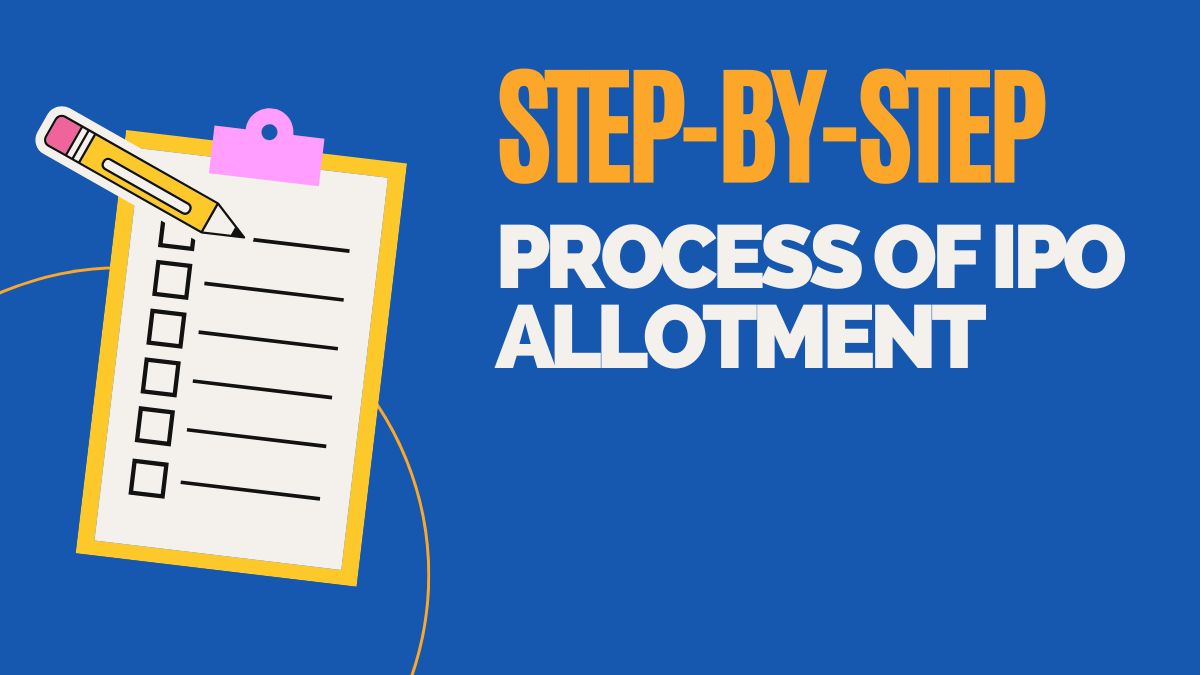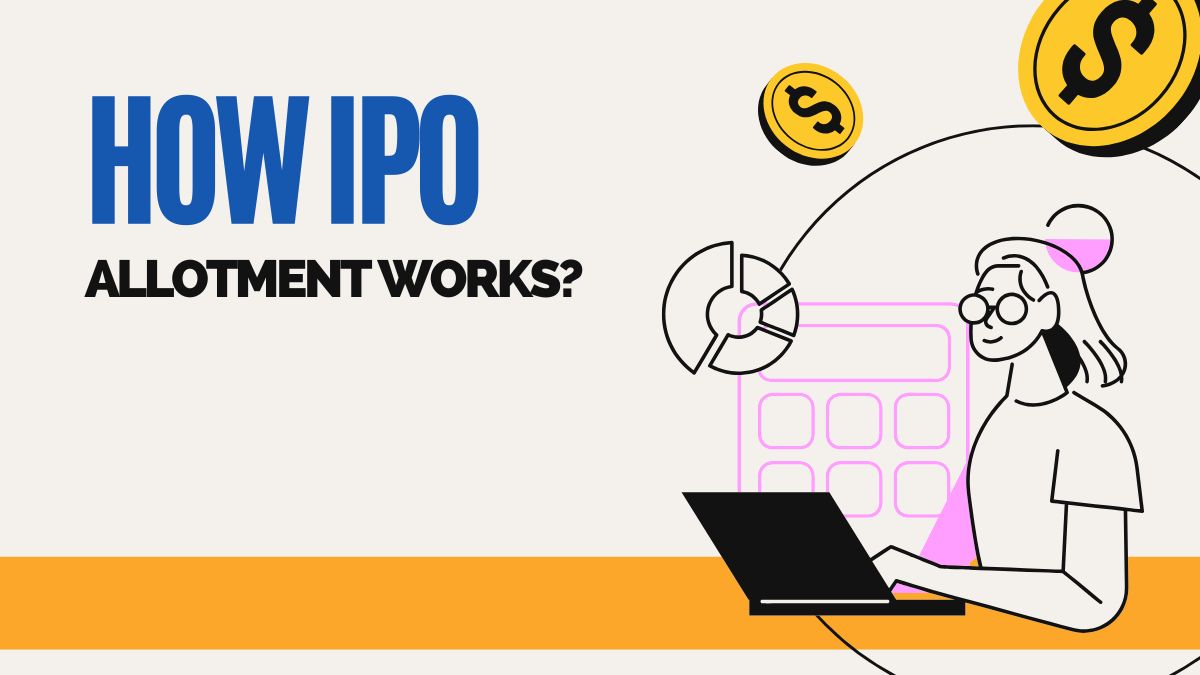Did you know that almost 75% of first-time investors miss out on a successful IPO because they don’t understand how IPO allotment works? Navigating the world of IPOs can be daunting, especially when it comes to securing shares in coveted companies.
In this step-by-step guide, we demystify the IPO allocation process and give you key insights and strategies to improve your investment opportunities. By the end of this article, you’ll be equipped with the knowledge you need to make informed decisions and profit from future IPOs.
Initial public offerings (IPOs) are an important opportunity for companies to raise capital and for investors to participate in the early growth phase of promising companies. However, to increase your chances of getting the shares you want, it’s crucial to understand the IPO allocation process.
This comprehensive guide will take you through the intricacies of IPO allocation, providing a step-by-step breakdown and valuable tips to improve your chances.
Understanding IPO Allotment
Allotment in an IPO refers to the process of distributing shares to investors after the end of the subscription period for an IPO. Since demand often exceeds the number of shares available, a structured allotment process ensures a fair distribution.
Shares are typically allocated to different categories of investors, including retail investors, high net worth individuals (HNI) and qualified institutional buyers (QIBs). The allotment process is influenced by factors such as overall demand, the level of oversubscription and a lottery system for retail investors.
Step-by-Step Process of IPO Allotment

The IPO allotment process is a multi-stage procedure that determines how the shares of a company going public are distributed to investors. Here you will find a simplified illustration of the process:
1. Filing the application
Investors apply for shares during the IPO subscription period, indicating how many shares they want to buy and at what price.
Applications are submitted via brokers or online platforms, with payment usually blocked in the investor’s bank account via the ASBA (Application Supported by Blocked Amount) facility.
2. Review and validation of the application
The Company’s appointed registrar collects all applications and checks them for completeness and validity.
Applications with errors or multiple applications for the same PAN will be rejected.
3. Categorisation of applicants
Investors are categorised into different groups, mainly
- Retail Individual Investors (RIIs): Individual investors applying for shares up to a certain limit.
- Non-Institutional Investors (NIIs): High net worth individuals and institutions applying for larger amounts.
- Qualified Institutional Buyers (QIBs): Institutional investors such as mutual funds, banks and insurance companies.
4. Allocation process
- Unsubscribed IPO: If the total number of shares applied for is less than or equal to the number of shares offered, all applicants will generally receive the shares they have applied for.
- Oversubscribed IPO: If the demand exceeds the number of shares available, allotment will be made through a lottery system or on a pro rata basis that ensures fair distribution among applicants in each category.
- Basis of allotment: The registrar prepares a document detailing the allotment process, including the number of shares allotted to each category and the criteria used for allotment.
5. Finalisation of the allotment
The registrar finalises the allotment list and indicates which and how many shares have been allotted to applicants.
Successful applicants will be notified of their allotment status.
6. Share credit and refund
The shares are credited to the demat accounts of the successful allottees.
Refunds will be processed for unsuccessful applicants and the blocked amount will be released in their bank accounts.
7. Listing and Trading
The shares of the company are listed on the stock exchanges (NSE and BSE) on a specified date.
Trading in the shares commences so that investors can buy and sell them in the open market.
Read More:
- Why IPO Gets Rejected? What Investors Should Know About Allotment Rejections?
- What is FPO in Share Market? A Beginner’s Guide to Follow-on Public Offers
Tips to Improve Your Chances of IPO Allotment
Although the allotment is often subject to chance, there are a few strategies you can consider:
- Apply through multiple Demat accounts: Family members can apply to increase the chances of getting an allotment.
- Pick the cut-off price: Bidding at the cut-off price (the highest price you are willing to pay) will increase your chances compared to a lower price.
- Consider less popular IPOs: Although it’s tempting to apply for highly publicized IPOs, you should also consider those where the subscription numbers are moderate, as your chances of allotment could be higher.
Common Mistakes to Avoid
- Incorrect bank details: Make sure all bank account and UPI details are correct to avoid rejection of the bid.
- Bidding below the cut-off price: This can significantly reduce your chances of allotment.
- Overlooking SME IPOs: Small and medium-sized enterprise (SME) IPOs are less well known but can sometimes offer good returns. Don’t ignore them, but read up thoroughly on their fundamentals.
Conclusion
Understanding the IPO allotment process is critical to a successful IPO investment. By following the steps outlined in this guide and avoiding common pitfalls, you can improve your chances of getting the shares you want.
Remember that thorough research is key before investing in an IPO. Analyse the company’s financials, understand the reasons for going public and align your investment with your overall financial goals. While IPOs can be lucrative, they also carry risks, so informed decision-making is crucial.
FAQ
1. What is an IPO?
An Initial Public Offering (IPO) is a process through which a private company offers its shares to the public for the first time. This allows the company to raise capital and provides investors with an opportunity to participate in the company’s early growth phase.
2. What does IPO allotment mean?
IPO allotment refers to the distribution of shares to investors after the subscription period ends. Due to high demand, a structured process is used to ensure a fair allocation of shares among different categories of investors.
3. Who are the different types of investors in an IPO?
Investors in an IPO are typically categorized into three groups:
- Retail Individual Investors (RII): Small investors applying for shares.
- Non-Institutional Investors (NII): High-net-worth individuals who apply for larger portions.
- Qualified Institutional Buyers (QIB): Institutional investors such as mutual funds and pension funds.
4. How do I apply for an IPO?
You can apply for an IPO through your broker, using UPI, or via ASBA (Application Supported by Blocked Amount). With ASBA, the application amount is blocked in your bank account until the allotment is completed.
5. What happens during the subscription period?
The subscription period is when investors submit their applications to buy shares. This period lasts a few days, and during this time, the total demand for the IPO is analyzed. If demand exceeds the number of shares offered, it results in oversubscription.
6. How is the allotment finalized?
After the subscription period ends, the basis for allotment is determined. For retail investors, a lottery system is often used in oversubscribed IPOs, while HNIs and QIBs usually receive shares on a pro-rata basis depending on their subscription and share availability.
7. What happens if I’m not allotted shares?
If you do not receive an allotment, the funds that were blocked in your account will be released (if you used ASBA). Refunds for unsuccessful applications are typically processed within a few working days.
8. When can I start trading the shares after an IPO?
Once the allotment is completed, shares are listed on the stock exchange, marking the start of trading. This usually occurs a few days after the final allotment. Share prices can be volatile on the listing day.
9. What strategies can I use to improve my chances of getting an allotment?
To increase your chances of allotment, consider:
- Applying through multiple Demat accounts (e.g., family members).
- Bidding at the cut-off price.
- Exploring less popular IPOs, which may have a higher chance of allotment due to moderate subscription numbers.
10. What are common mistakes to avoid during the IPO application process?
Common mistakes include:
- Providing incorrect bank or UPI details, leading to bid rejection.
- Bidding below the cut-off price, which reduces allotment chances.
- Overlooking SME IPOs, which can sometimes yield good returns despite being lesser-known.
By understanding these aspects of the IPO allotment process, you can make informed decisions and improve your chances of securing shares in future IPOs.

